If a symmetrical bi-concave thin lens is cut into two identical halves, and they are placed in different ways as shown, then 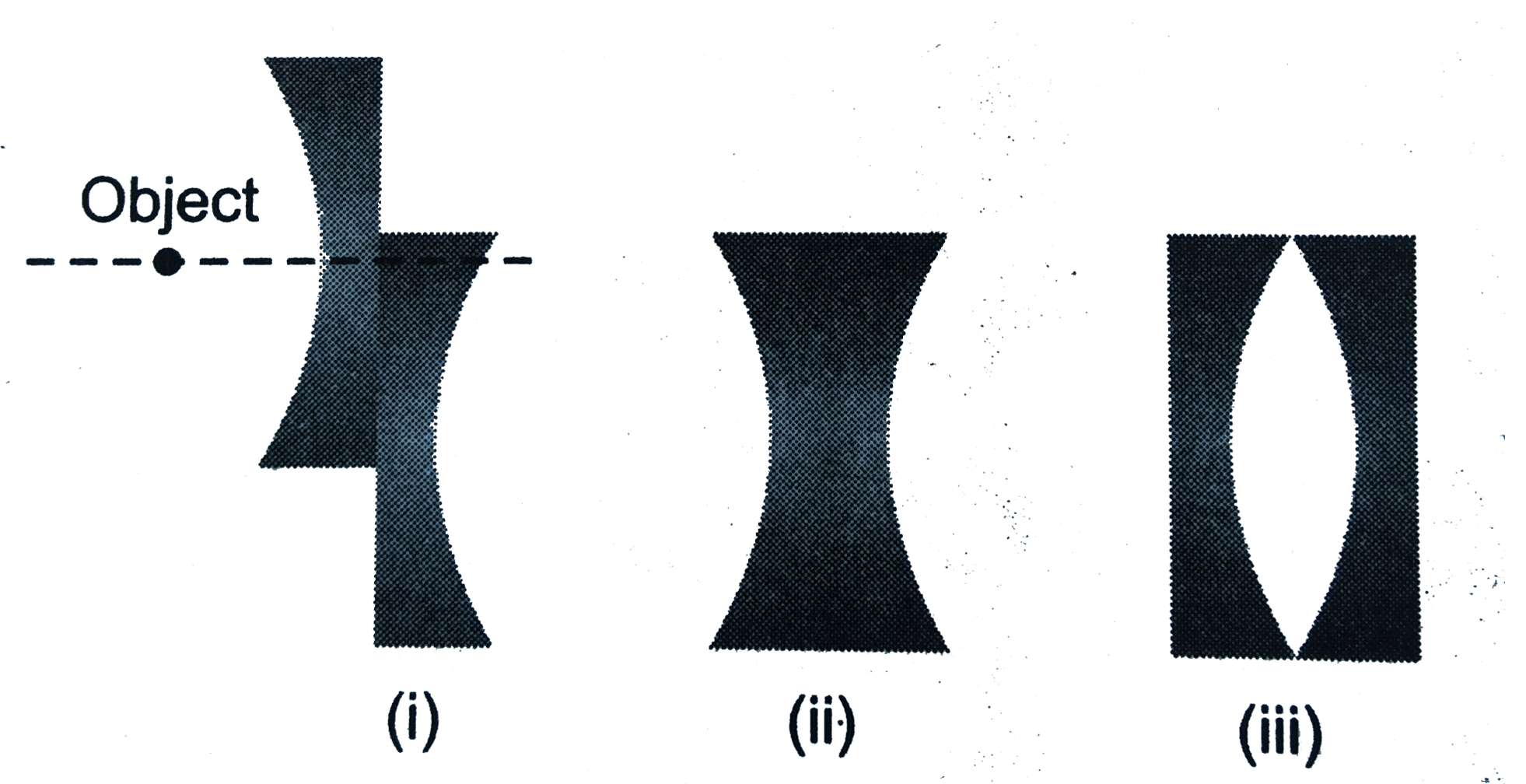
three images will be formed in case (ii)
three images will be formed in case (i)
the ratio of focal lengths in (ii) and (iii) is 1
the ratio of focal lengths in (ii) and (iii) is 2
The correct Answer is:C
(a) Two images are formed in case(i).
(b) One image is formed in case (ii).
(c) 1f2=(μ−1)(1−R−1R)=−2R(μ−1)….(i)
1f3=1F1+1F2
=(μ−1)(1∞−1R)+(μ−1)(1−R−1∞)…..(ii)
From Eqs. (i) and (ii), we can see that f2=f3.
Topper's Solved these Questions
- BOOK - DC PANDEY ENGLISHCHAPTER - REFRACTION OF LIGHTEXERCISE - Single Correct Option3videos
REFRACTION OF LIGHT
- BOOK - DC PANDEY ENGLISHCHAPTER - REFRACTION OF LIGHTEXERCISE - more than one correct option1videos
REFRACTION OF LIGHT
- BOOK - DC PANDEY ENGLISHCHAPTER - REFRACTION OF LIGHTEXERCISE - Subjective Questions8videos
REFRACTION OF LIGHT
- BOOK - DC PANDEY ENGLISHCHAPTER - REFLECTION OF LIGHTEXERCISE - Subjective9videos
REFLECTION OF LIGHT
- BOOK - DC PANDEY ENGLISHCHAPTER - SEMICONDUCTORSEXERCISE - Subjective12videos
SEMICONDUCTORS
Similar Questions
A symmetric double convex lens is cut in two equal parts by a plane perpendicular to the principal axis. If the power of the original lens was 4D, the power of a cut lens will be
View SolutionIn the figure (i) a thin lens of focal length 10cm is shown. The lens is cut into two equal parts, and the parts are arranged as shown in the figure (ii). An object AB of height 1cm is placed at distance of 7.5cm from the arrangement. The height of the final image will be:
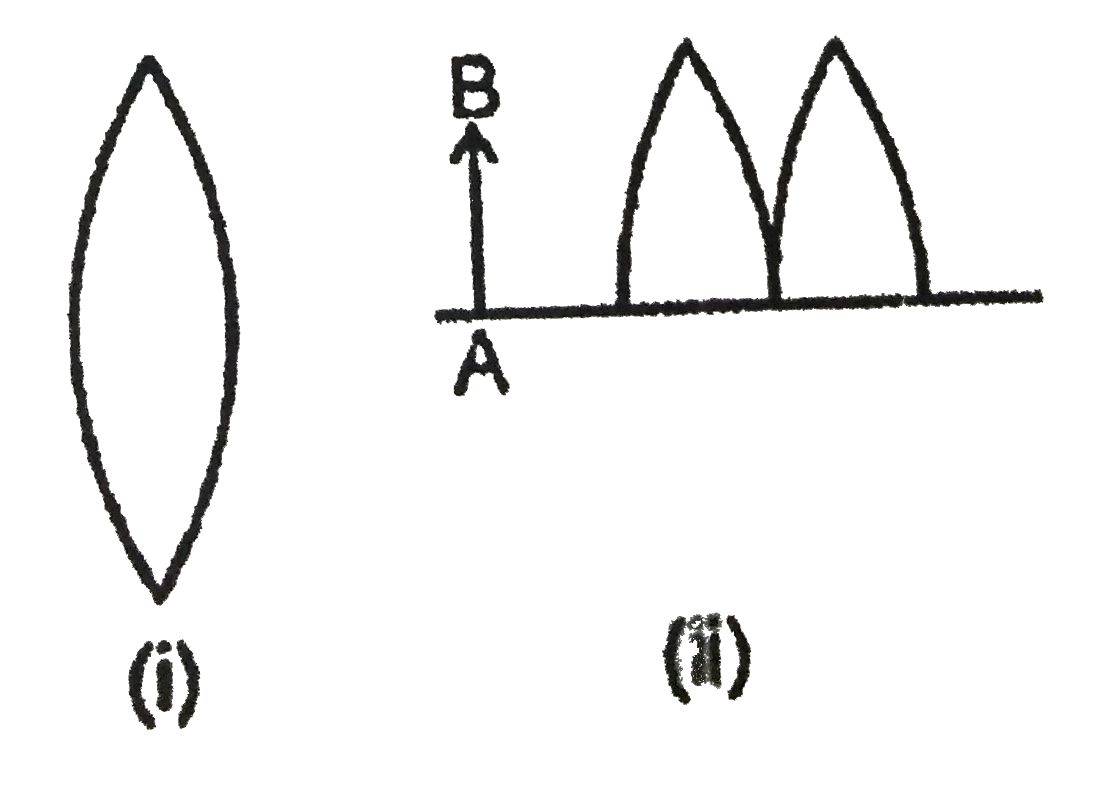 View Solution
View SolutionA symmetric double convex lens is cut in two equal parts by a plane perpendiculr to the pricipal axis. If the power of the original lens was 4D, the power of a cut lens will be
a.2D b.3D c.4D d.5DView SolutionIn a system of two dipoles placed in the way as shown in figure :
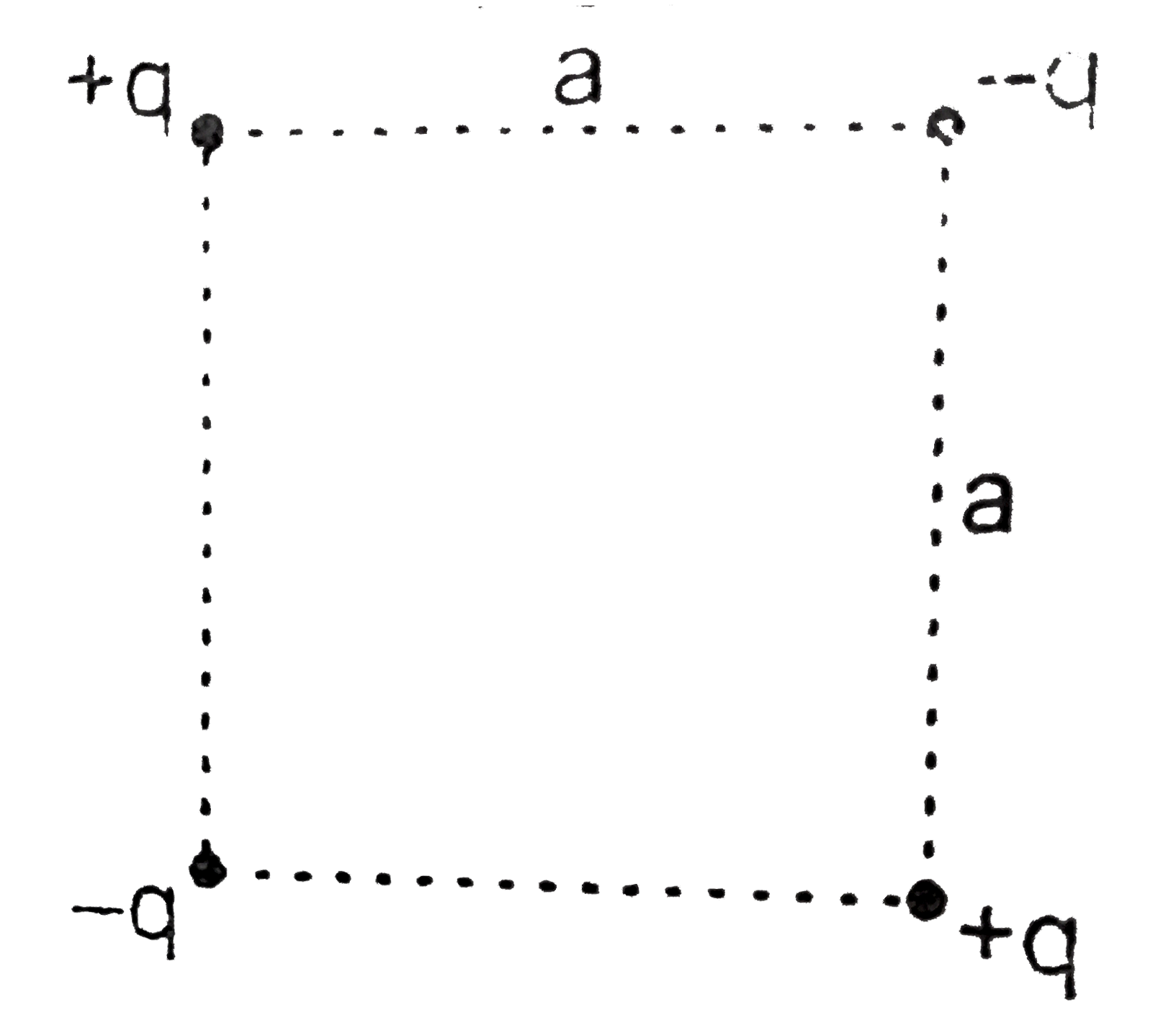 View Solution
View SolutionA lens of focal length f is cut along the diameter into two identical halevs. In this process, a layer of the lens t in thickness is lost, then the halves are put together to form a composite lens. In between the focal plane and the composite lens, a narrow slit is placed near the focal plane. The slit is emitting monochromatic λ. Behind the lens, a screen is located at a distance L front it.
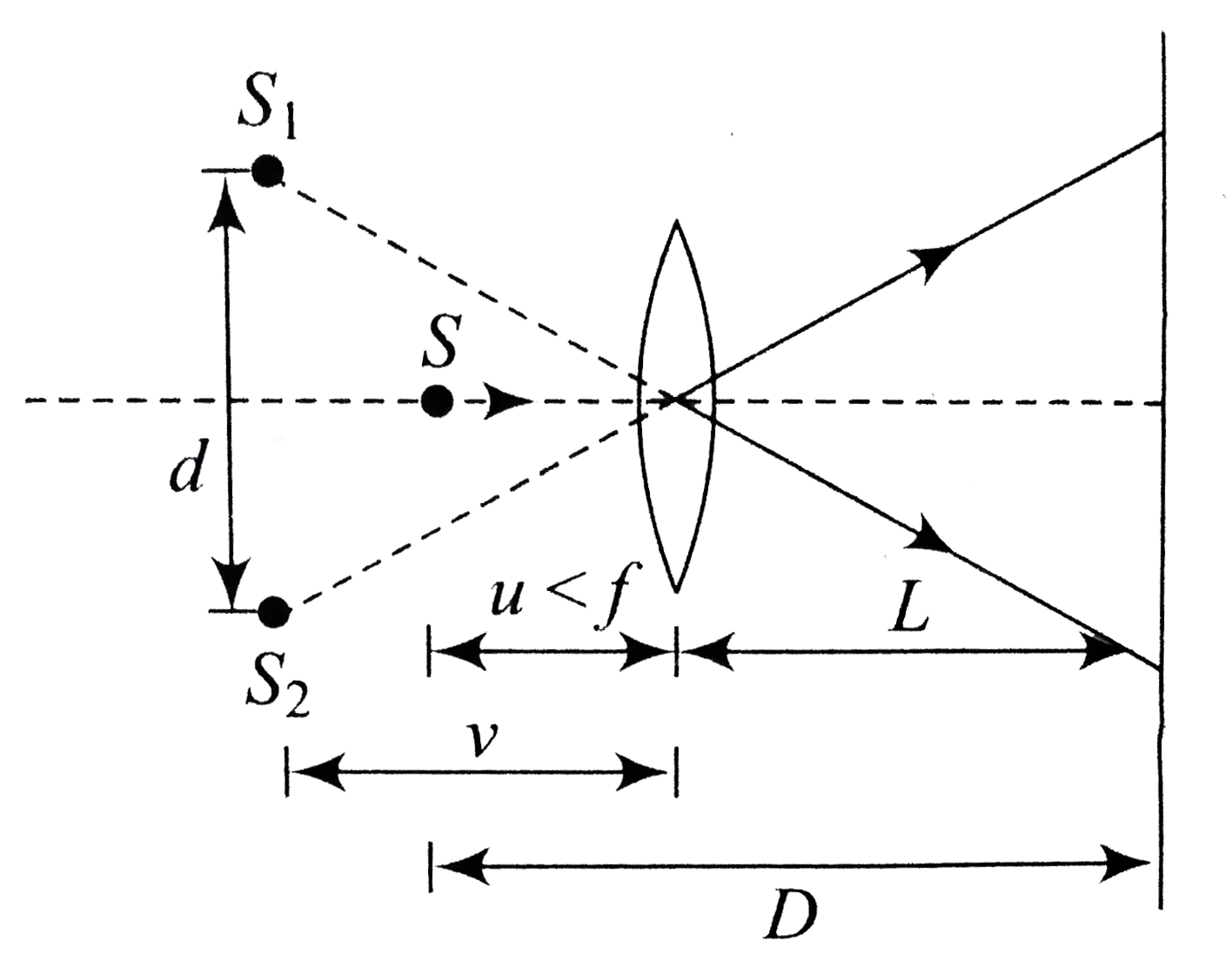
The expression for the number of visible maxima which are obtained through above said arrangement will turn out to beView SolutionA lens of focal length f is cut along the diameter into two identical halevs. In this process, a layer of the lens t in thickness is lost, then the halves are put together to form a composite lens. In between the focal plane and the composite lens, a narrow slit is placed near the focal plane. The slit is emitting monochromatic λ. Behind the lens, a screen is located at a distance L front it.
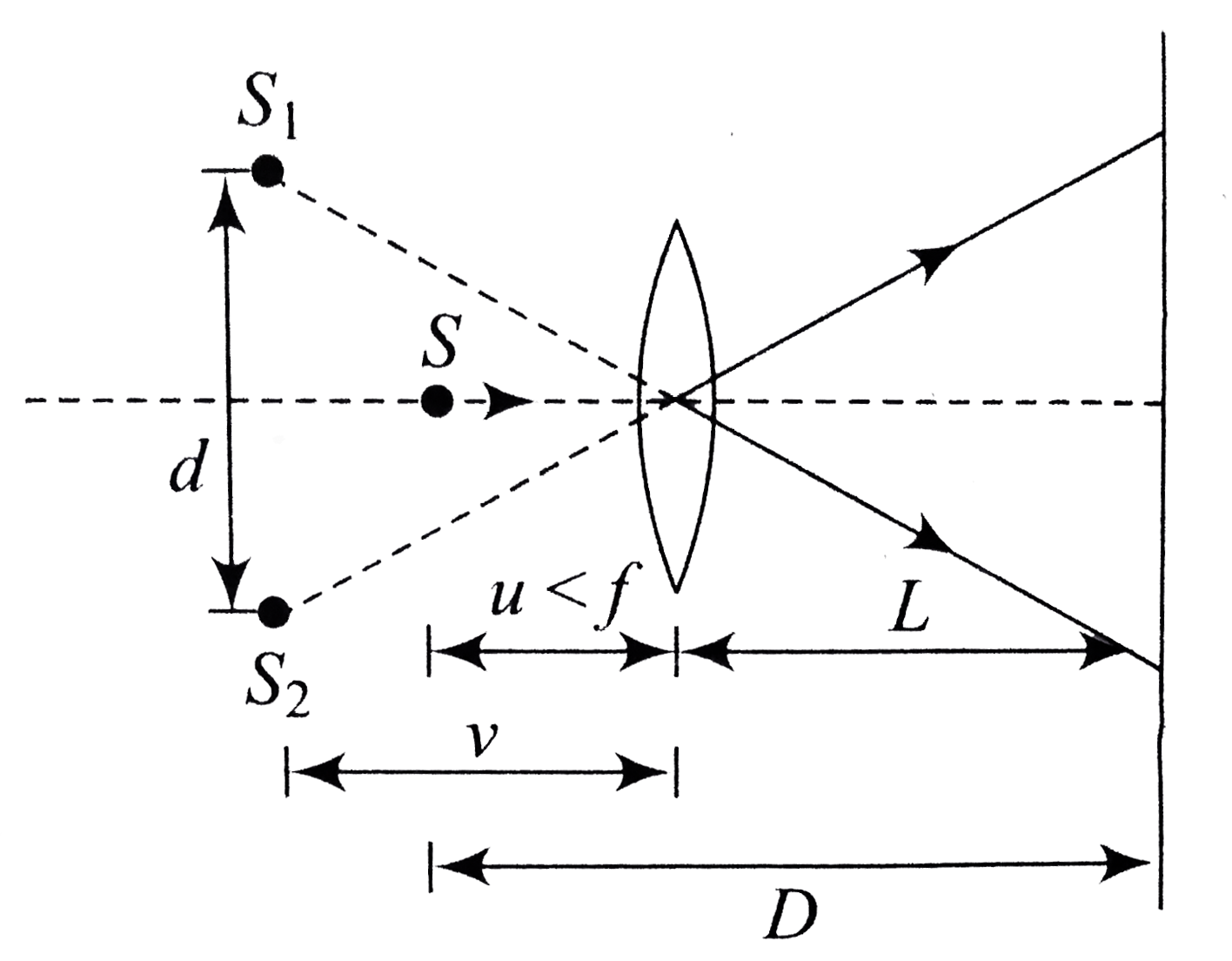
Find the fringe width for the pattern obtained under given arrangement on the screen.View SolutionA thin spherical shell of radius R is cut into two equal halves and then each of its halves is charged to the same uniform surface charge density σ. If F is the force exerted on each half to keep them at equilibrium, then F is proportional to
 View Solution
View SolutionA convex lens is cut into two parts in different ways that are arranged in four manners, as shown. Which arrangement will give maximum optical power?
View SolutionAn object suspended from a spring exhibits oscillations of period T. Now the spring is cut in two halves and the same object is suspended with two halves as shown in figure. The new time period of oscillation will become
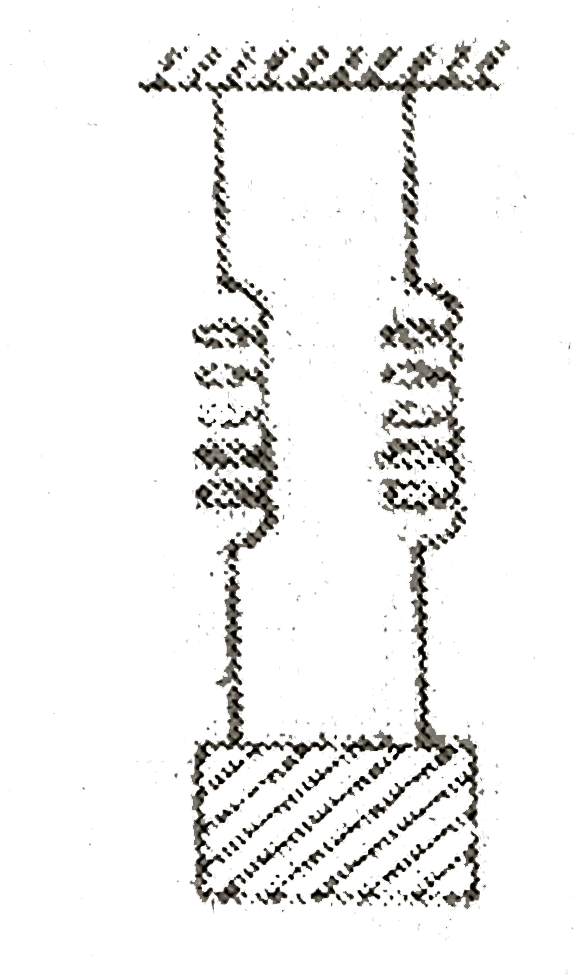 View Solution
View SolutionFind the focal length of the lens shown in Fig.
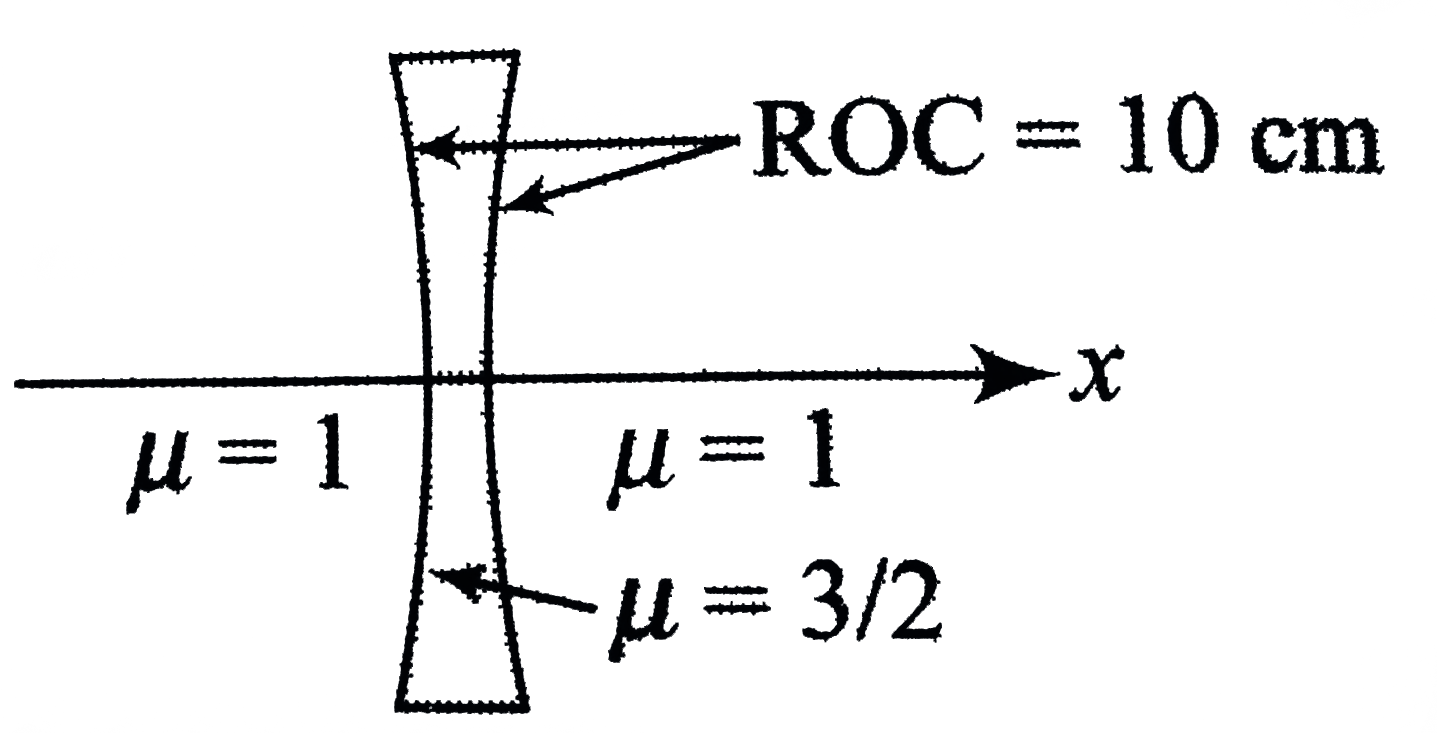 View Solution
View Solution

